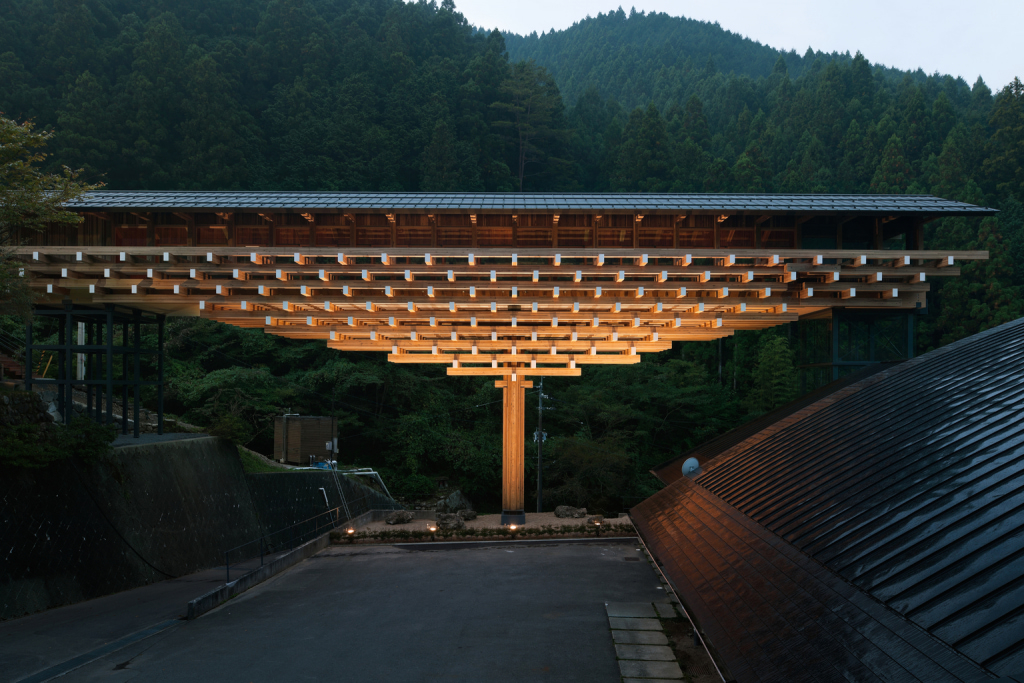Japanese architecture is full of surprises. In one location you’ll often see delicate traditional buildings mixed in with stoic modern ones as well as something kitsch. There are also many museums in this country that are famous for their architecture. We selected five masterpieces designed by famous architects that are well worth seeing.
1. Yusuhara Wooden Bridge Museum by Kengo Kuma, Kochi Prefecture
Kengo Kuma is famous for the ingenious manipulation of natural materials. The town of Yusuhara in Kochi Prefecture is known for its abundance of cedar wood. This is, therefore, a match made in heaven. In addition to the wonderful Yusuhara Town Hall, also designed by Kuma, the Yusuhara Wooden Bridge Museum, completed in 2010, adds to the significant landmarks in this mountain region.
Winner of The Minister of Education, Culture, Sports, Science and Technology’s Art Encouragement Prize (2011), this museum is recognized for the unique cantilever bridge design using laminated cedar wood members with small sections, which gradually extend the bridge girder and balance it at the center of the pier. By accumulating hanegi (corbel) to support the load from the eaves, the structure is able to immerse perfectly with the forested surroundings of the site.
This traditional construction method is called “to-kyo” (square framing). The museum serves as a link between a hotel and a spa, which had been separated by a cliff and a road.
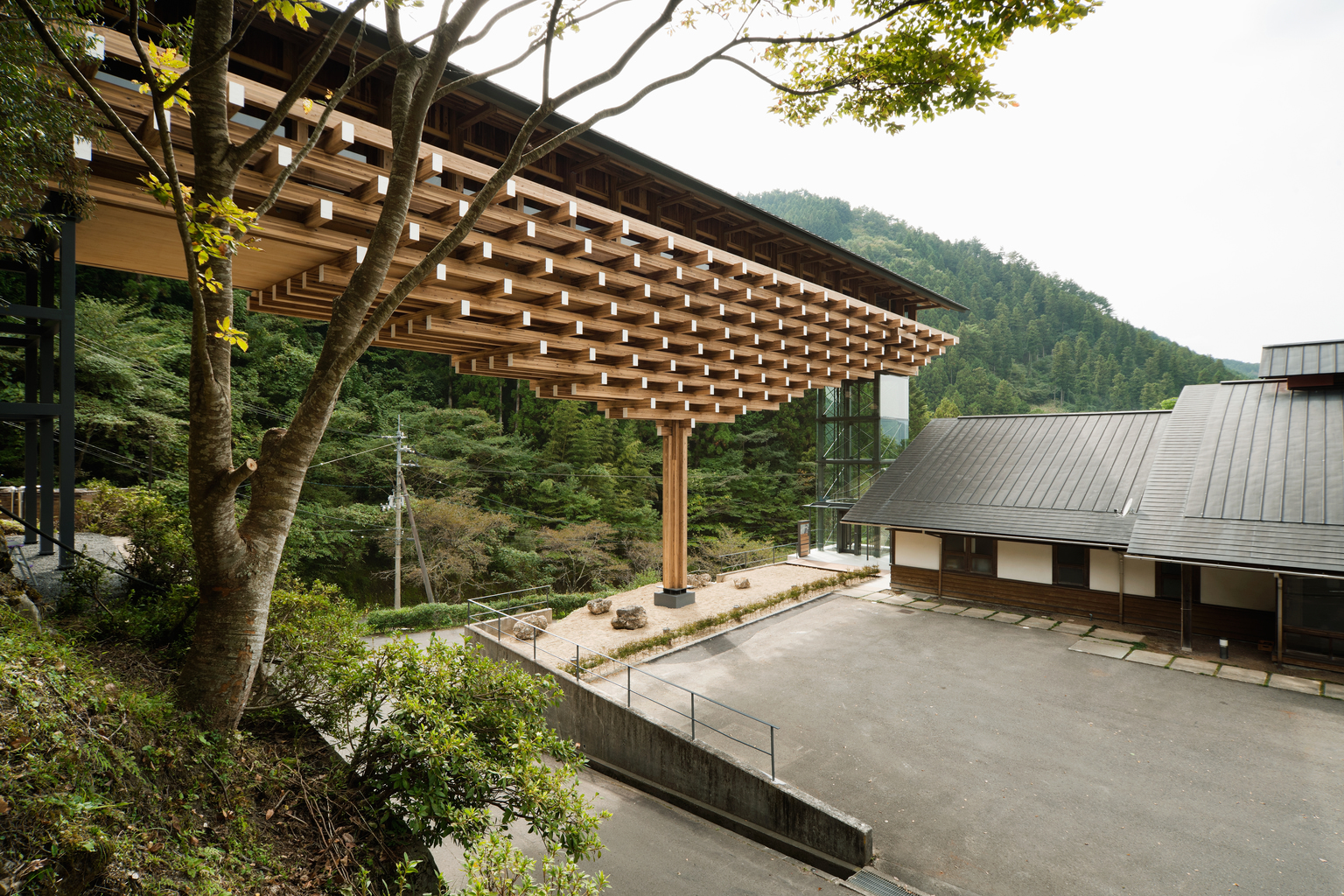
Yusuhara Wooden Bridge Museum © Takumi Ota
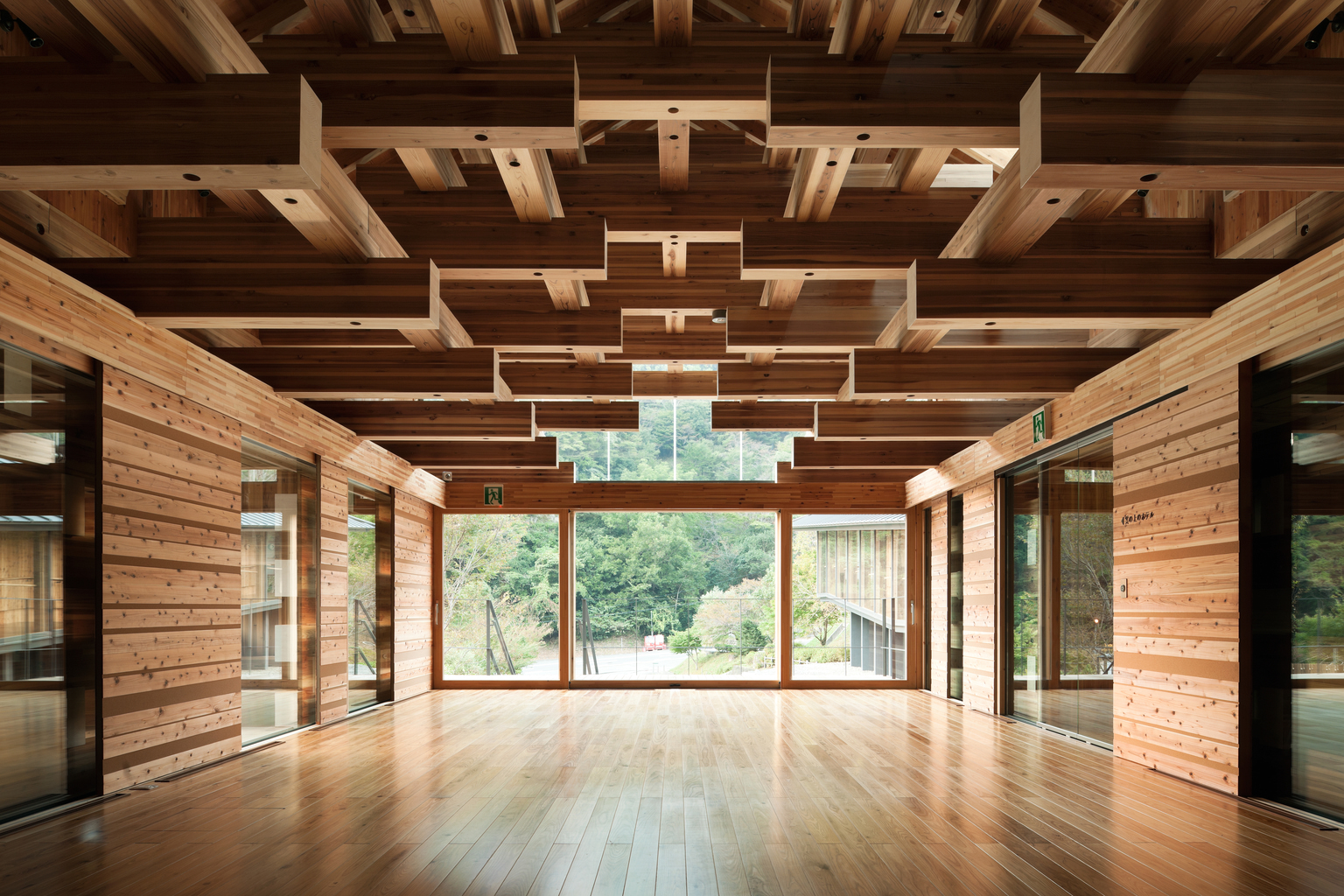
Yusuhara Wooden Bridge Museum © Takumi Ota
2. Hiroshi Senju Museum by Ryue Nishizawa, Nagano Prefecture
The beloved Nihonga artist Hiroshi Senju, who is also known for his large-scale waterfall paintings, has established his own museum in the forested landscape of Karuizawa. Opened in 2011, Hiroshi Senju Museum (stylized as HIROSHI SENJU MUSEUM) was designed by architect Ryue Nishizawa who won the Golden Lion Award at the 2004 Venice Biennale of Architecture.
Embracing the rustic sceneries of Karuizawa, Nishizawa envisioned an open and luminous space that highlights the natural slope of the site. Controlled lighting is achieved by the deep eaves, silver screens and UV-cut glass. It also flows tenderly with the greenery. About 60,000 plants of 150 varieties in a palette of pink, yellow, purple, silver and red shrubs gleam in a color leaf garden that blends gracefully with Senju’s art. The museum showcases around 100 works by the artist from 1978 to the present day.
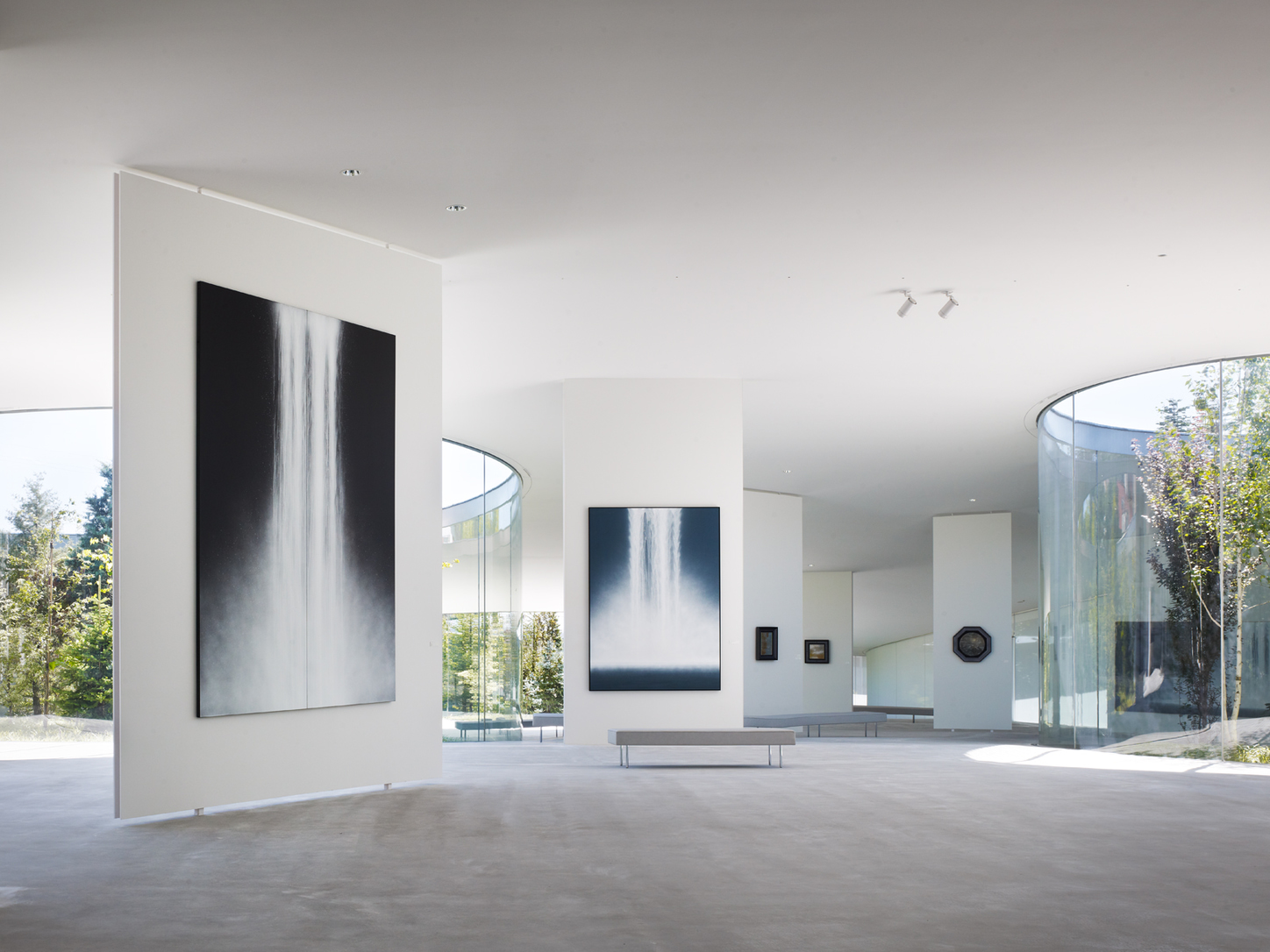
Daici Ano © Hiroshi Senju Museum Karuizawa
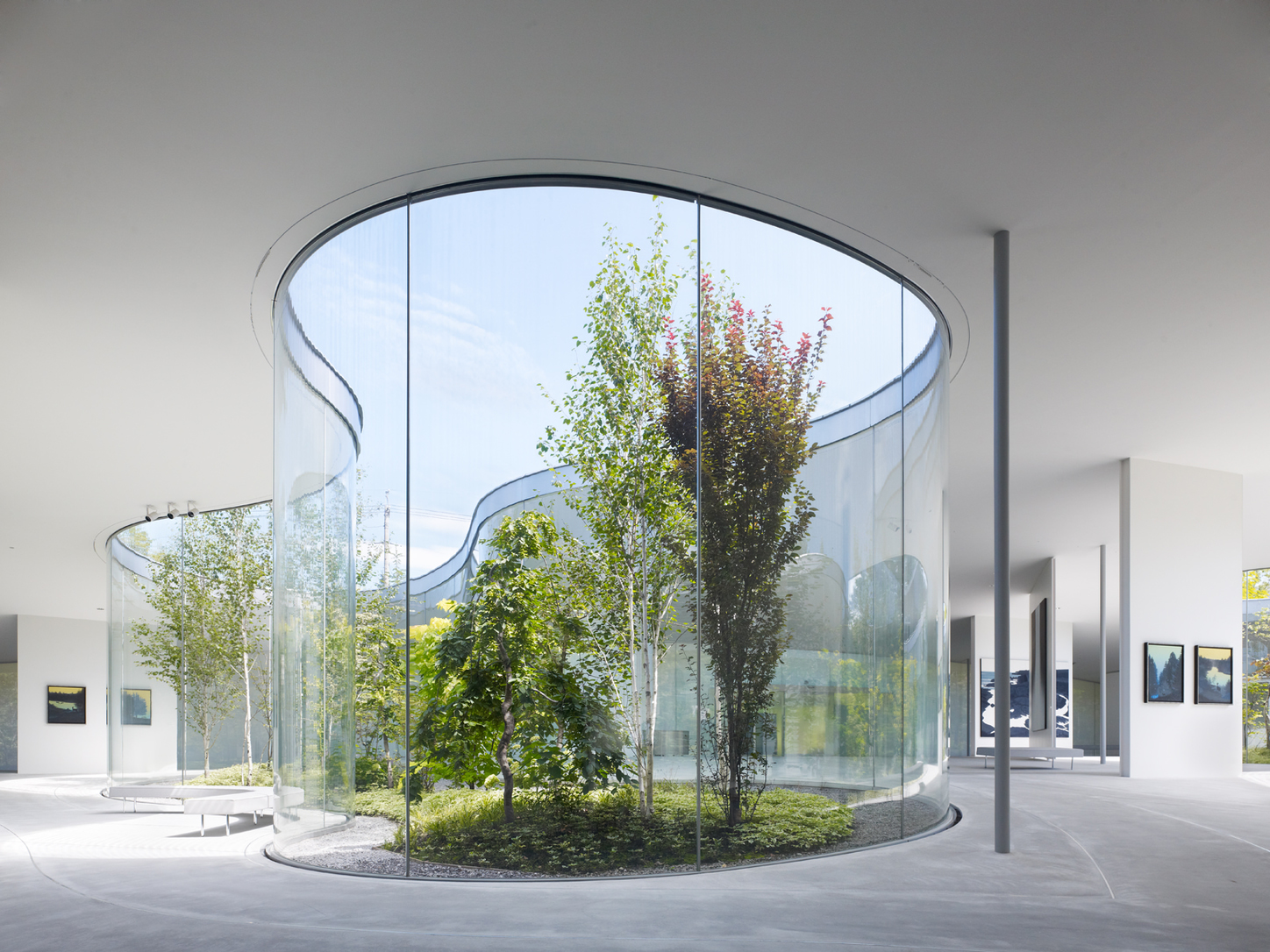
Daici Ano © Hiroshi Senju Museum Karuizawa
3. Odawara Art Foundation Enoura Observatory by Hiroshi Sugimoto, Kanagawa Prefecture
Opened in 2017, the Enoura Observatory was co-designed by Hiroshi Sugimoto and the New Material Research Laboratory. It intends to usher “memories of ancient culture of the human civilization.”
Renowned photographer and architect Hiroshi Sugimoto is noted for infusing a chemistry of elements from metaphysics, cosmology, optics, archaeology, nature, religious beliefs and craft traditions into his works. He established the Odawara Art Foundation and visualized the design for the Enoura Observatory, which sits on a hilly citrus grove in the Kataura district of Odawara, between the Hakone mountains and the sea.
Overlooking Sagami Bay, the complex consists of a 100-meter summer solstice light-worship gallery with a structural wall covered in Oya stone and a glass-paneled opposing wall. A 70-meter winter solstice tunnel filters the sunrise view from the bay. It includes an optical glass stage built from the kakezukuri (joint wood in a lattice pattern) framework made of Hinoki cypress.
There is also a Noh theatre stone stage. The Uchoten (rain-listen-heaven) teahouse consists of a corrugated iron roof, from which you can hear the echoing sound of raindrops. The 15th-century Meigetsu entrance gate and Old Naraya gate introduce an element of deep tradition.
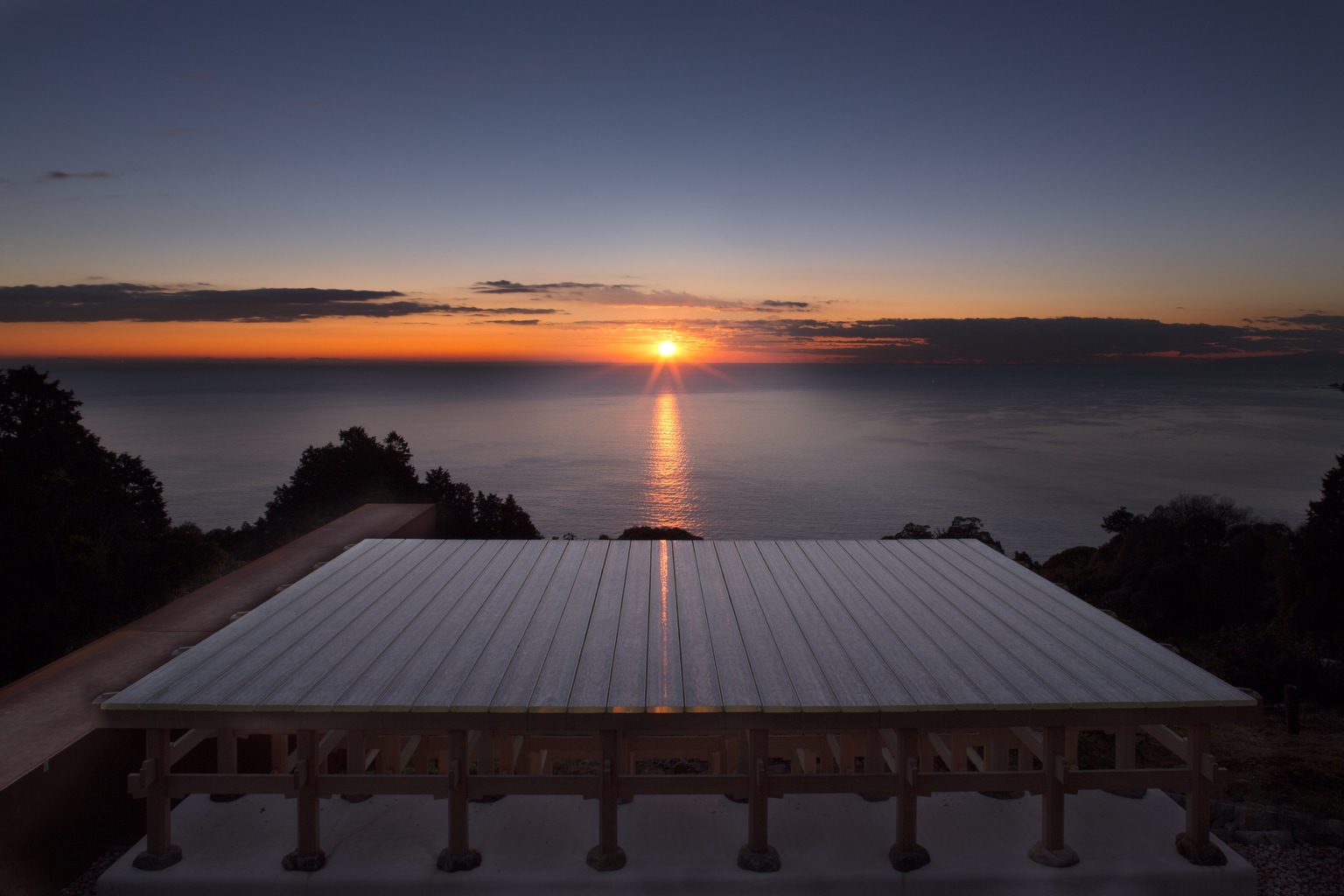
Optical Glass Stage and Winter Solstice Light-Worship Tunnel © Odawara Art Foundation
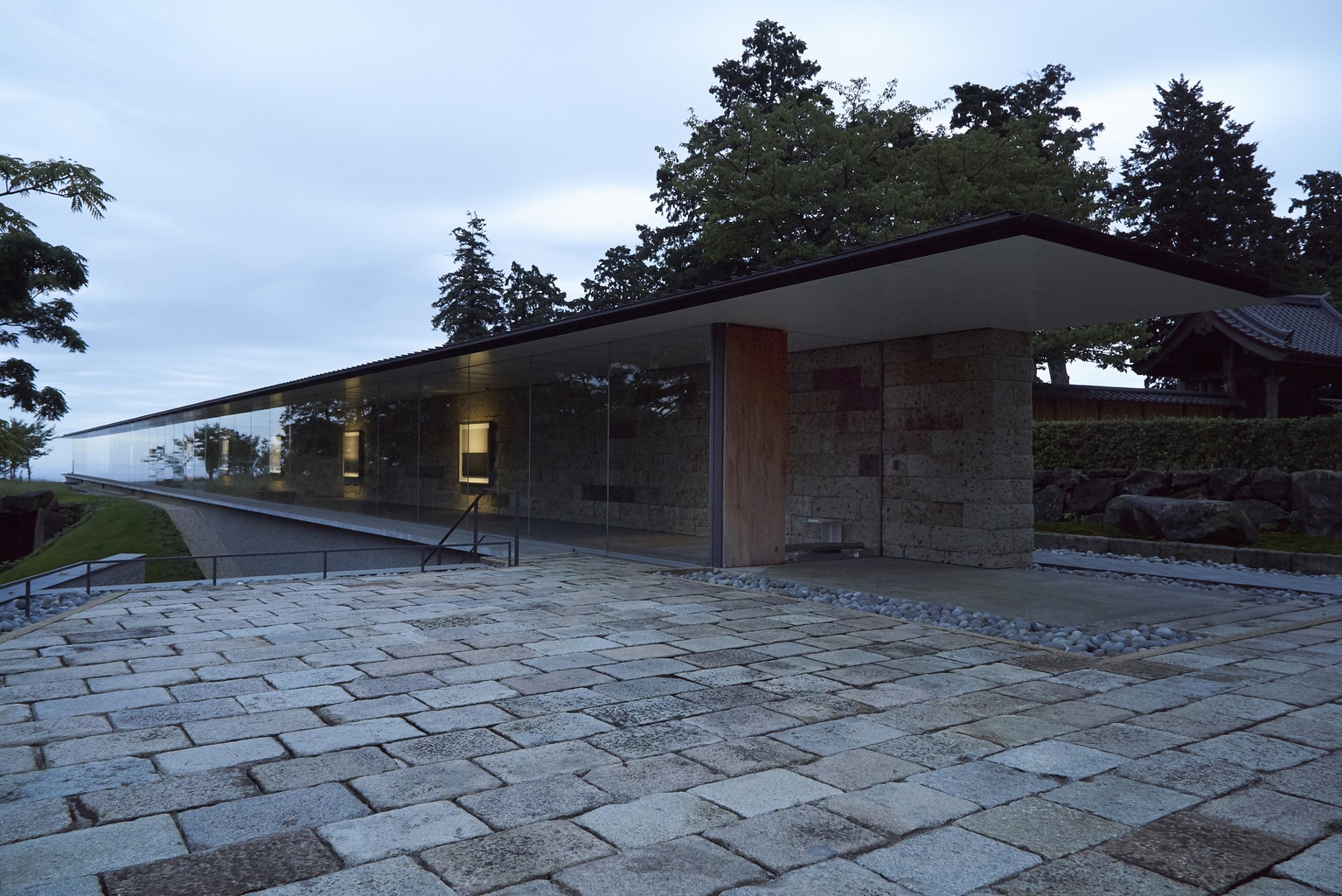
Summer Solstice Light-Worship 100-Meter Gallery © Odawara Art Foundation
4. Miho Museum by I.M. Pei, Shiga Prefecture
I. M. Pei, the man behind the glass-and-steel pyramid for the Louvre Museum in Paris, has created an “ethereal utopia” in the design of the Miho Museum. Dubbed the “Shangri-La,” the museum has taken its inspiration from the Chinese tale Taohua Yuan Ji (The Peach Blossom Spring). It narrates the story of a fisherman who encounters a fully bloomed peach orchard while roaming into a grotto. He is struck by a ray of light that leads him to a euphoric view of a heavenly village filled with joyful inhabitants.
Just like the tale, the road to the museum points out to a sloping walkway with weeping cherry trees while visitors have to pass through a tunnel and cross over a bridge. The inclined glass walls are composed of space frames. Warm Magny Dore limestone was also used, reflecting the light that passes through the hip-and-gable styled glass roof patterned in triangle frames.
Opened in 1997, Miho Museum was founded by Mihoko Koyama and contains a vast collection of tea ceremony utensils, paintings, calligraphy, ceramics, lacquerware and other Japanese art.
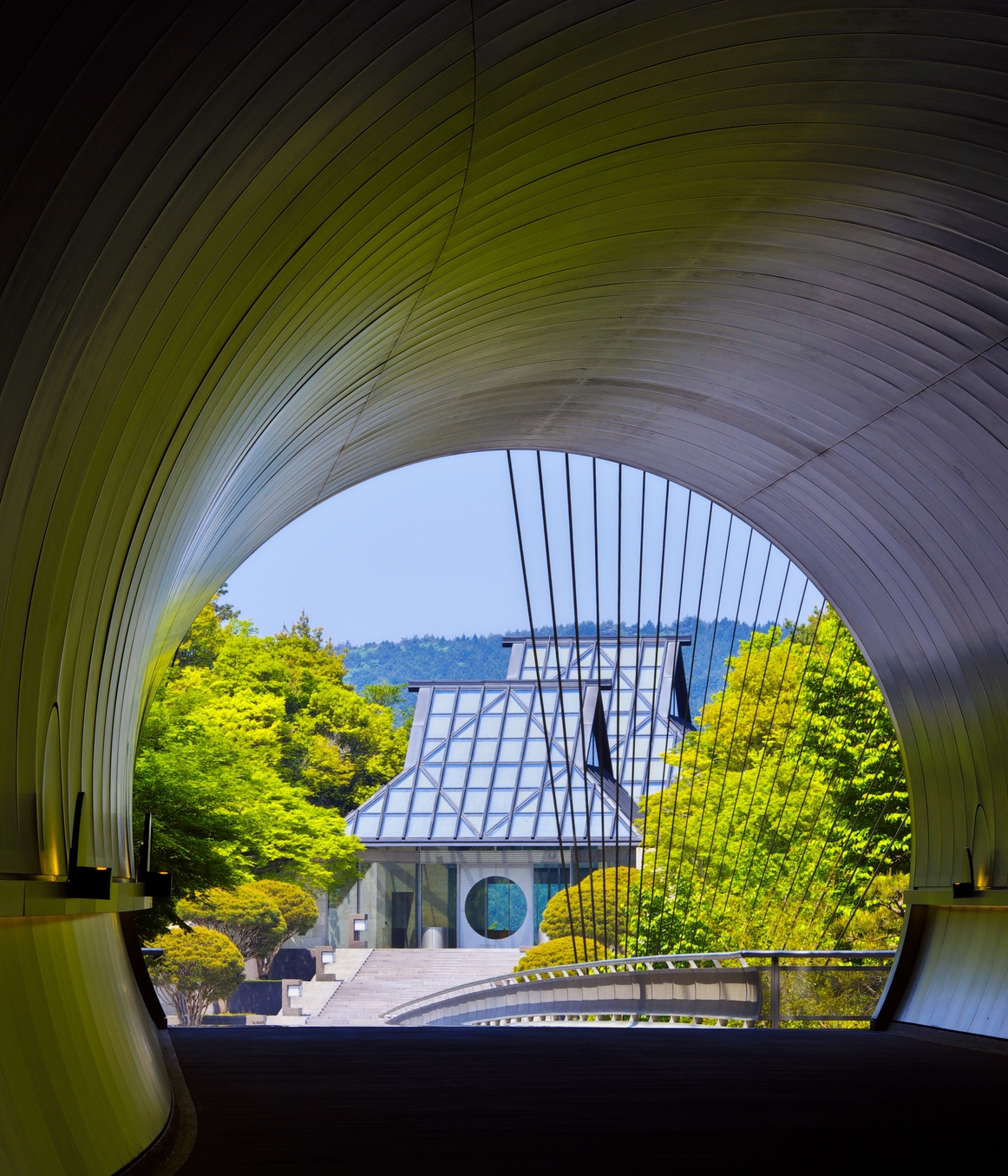
View from exit of approach tunnel © Miho Museum
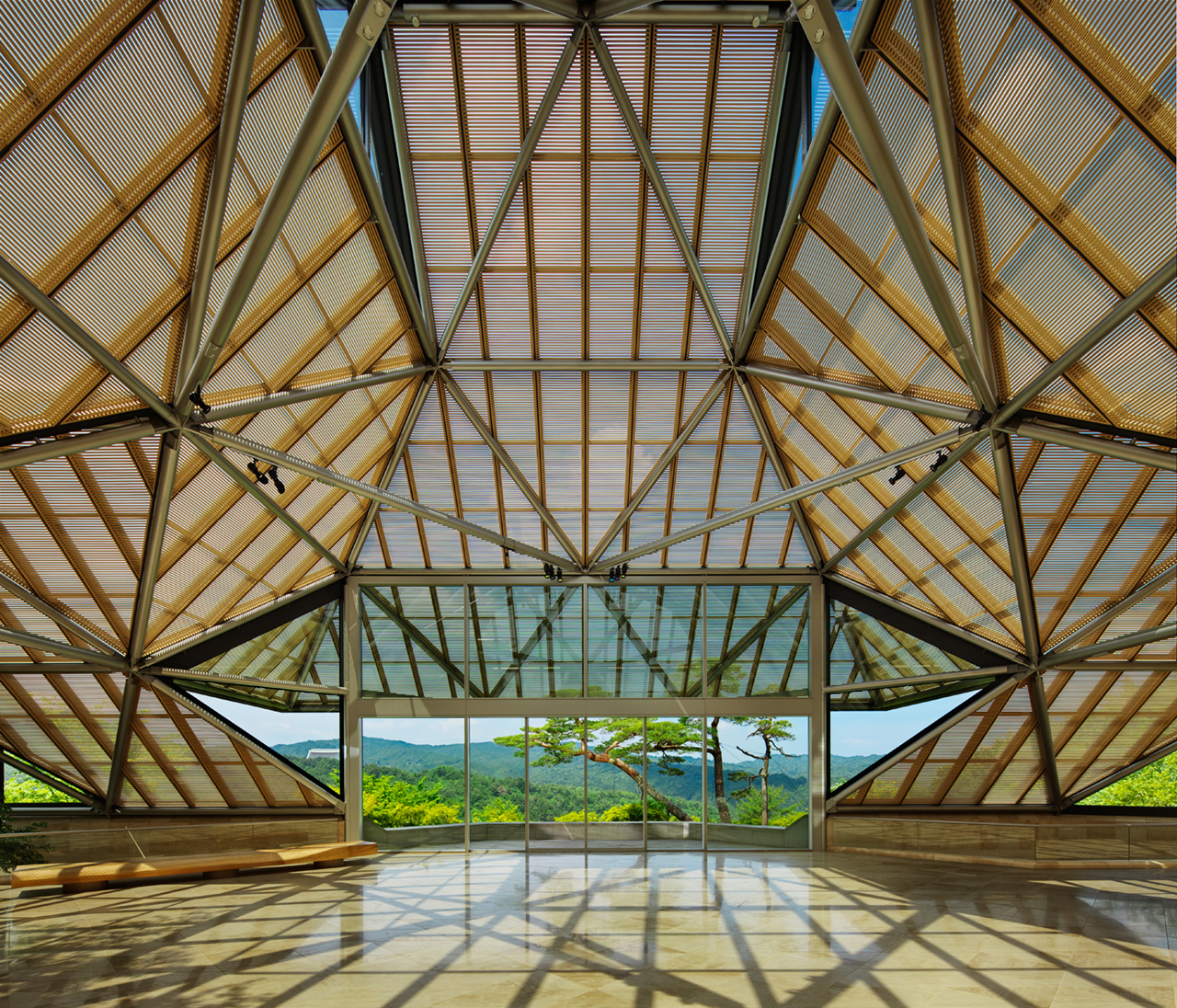
Entrance hall © Miho Museum
5. Oita Prefectural Art Museum by Shigeru Ban, Oita Prefecture
Referred to as an “open” art museum, Oita Prefectural Art Museum was designed by Shigeru Ban. The museum reveals an entirely retractable glass-paneled and enclosed structure that encourages people to enjoy and move around the space freely and flexibly from the street. On the southern facade of the two-story high ground-floor atrium, bi-folding glass doors open to a semi-outdoor public space, thus bridging the interior with the exterior.
Activities inside the museum appear transparent from the street view. The concept is inspired by the traditional engawa, (a covered exterior corridor visible in many traditional Japanese homes). The latticed facade of the upper floors and other interior areas reflects the prominent bamboo craft tradition of the Oita region.
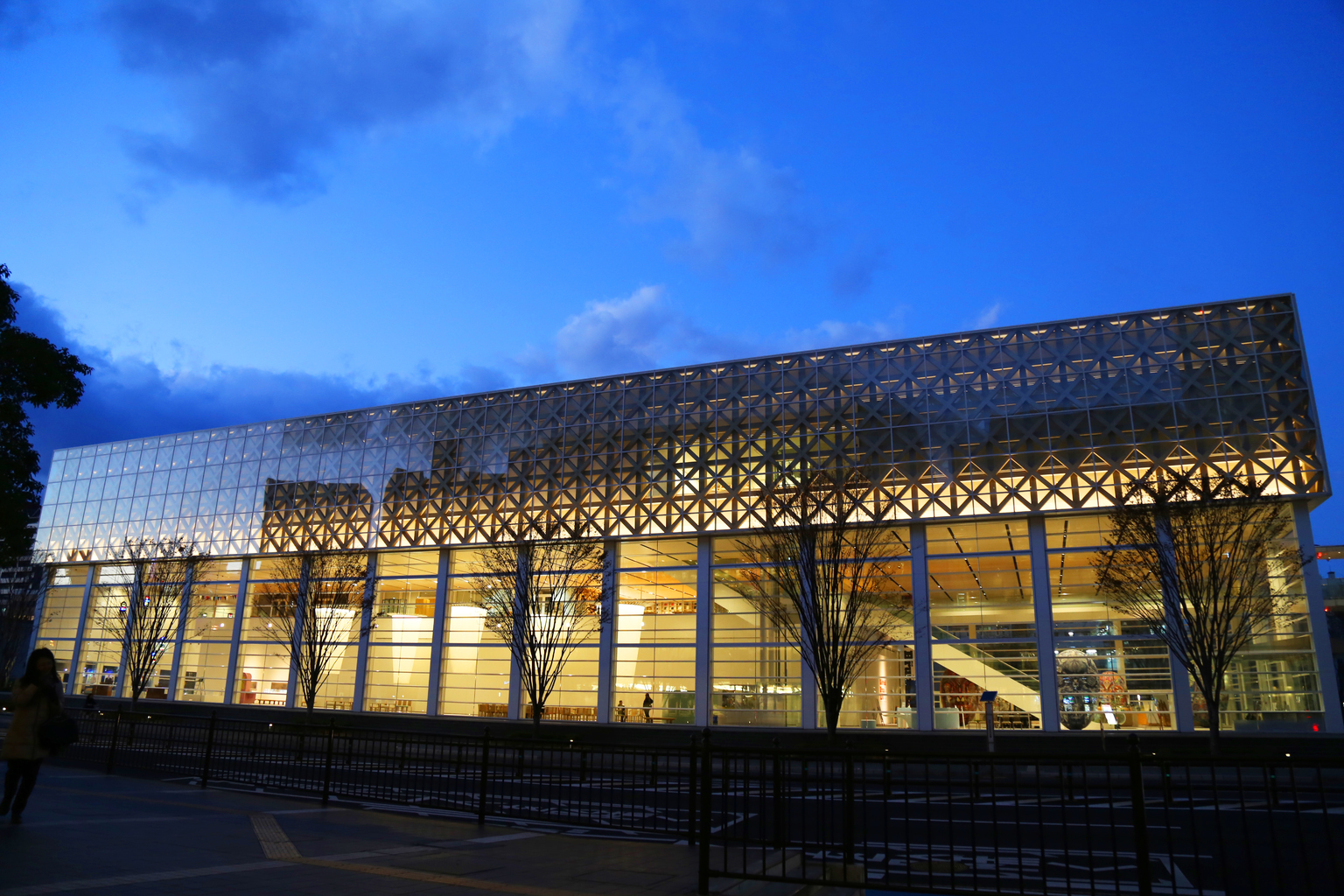
Building exterior, night view © Oita Prefectural Art Museum
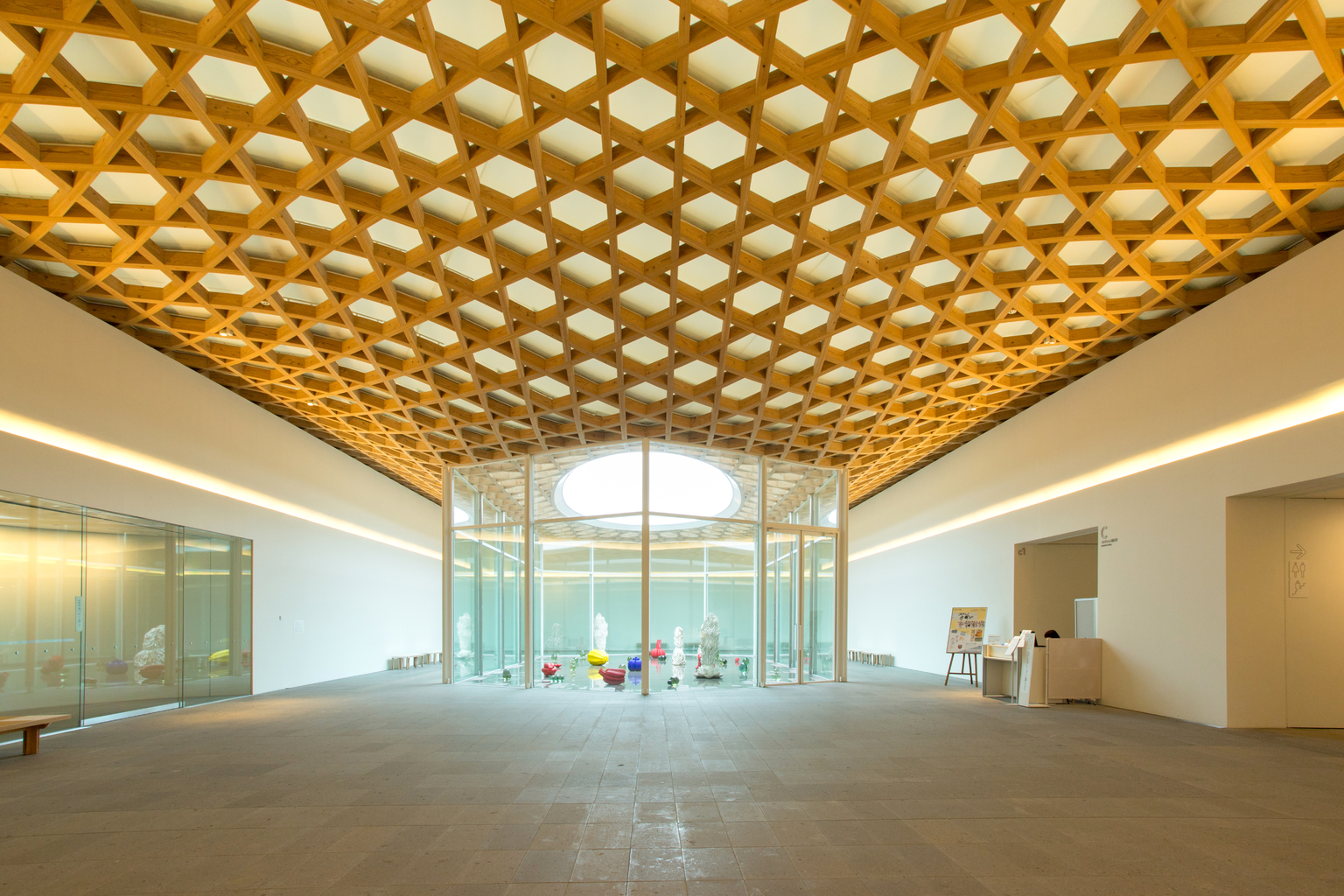
Foyer, 3rd floor © Oita Prefectural Art Museum
*See the museum websites for their current opening times.
Read more about Japanese art and architecture in some of our interviews:
Tokyo Deconstructed: Kengo Kuma Talks About the City’s Future
10 Questions With Renowned Japanese Artist Hiroshi Senju
And for great architecture in Tokyo, check out these articles:
Tokyo Architecture: 5 Famous Japanese Architects’ Buildings to Visit
Tokyo’s 10 Most Instagrammable Pieces of Modern Architecture

